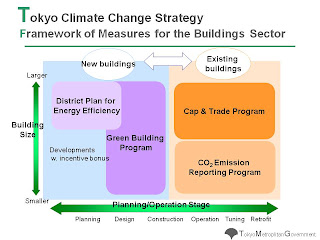 Maggie Comstock
Maggie Comstock
Policy Analyst
U.S. Green Building Council
Tens of thousands of delegates from diverse backgrounds and geographical regions convened in Rio to protect the future we want through sustainable development policy. While progress was made on the negotiating text, few are satisfied with the level of commitments and accountability from national governments. However, the news from Rio isn’t entirely bleak. Subnational governments are leap-frogging the unambitious goals of national governments to realize their own goals of urban sustainability.
 |
| Me with Yuko Nishida, planner, Bureau of Environment Metropolitan Government of Tokyo |
The benefits of green buildings are becoming more mainstream as businesses and governments alike embrace the economic, brand, social and environmental benefits of green buildings. So what’s stopping every city in the world from building sustainably? Despite the quick payback periods of green building strategies, up-front costs to green construction still remain a significant barrier. Innovative financing solutions are now being promoted by the public and private sectors to overcome these barriers to green buildings.
The Metropolitan Government of Tokyo’s urban cap and trade program for commercial buildings is not only the first of its kind in the world, but has already achieved staggering results in its first year of operation. In order to achieve 25 percent emissions reductions below 2000 levels by 2020, the city of Tokyo analyzed its carbon footprint by sector, revealing that the commercial building sector was by far the greatest contributor to greenhouse gas emissions. The urban cap and trade program governs the emissions of 1,300 commercial and industrial facilities, which covers approximately 40 percent of the commercial and industrial sectors’ emissions. Essentially, all buildings are required to reduce their emissions by six percent in the first compliance period (2010-2014) and 17 percent in the second compliance period (2015-2019). Buildings that achieve reductions greater than six percent can sell excess reductions to other, less flexible buildings. While some buildings may make deep energy retrofits and others do nothing, overall the emissions reduction goals is still met.
Needless to say, this is an innovative financing policy for greening the buildings sector but the proof is in the results. In the program’s first year, participating buildings achieved 13 percent reductions in base year emissions, which means commercial building owners have embraced this new financial opportunity and gone above and beyond the minimum requirement. Tokyo is definitely a city to watch for future innovation in sustainability.
[source: http://feedproxy.google.com/~r/UsgbcBlog/~3/ZMO5KUwxgl0/tokyos-urban-cap-and-trade-for.html]

Leave a Reply
You must be logged in to post a comment.